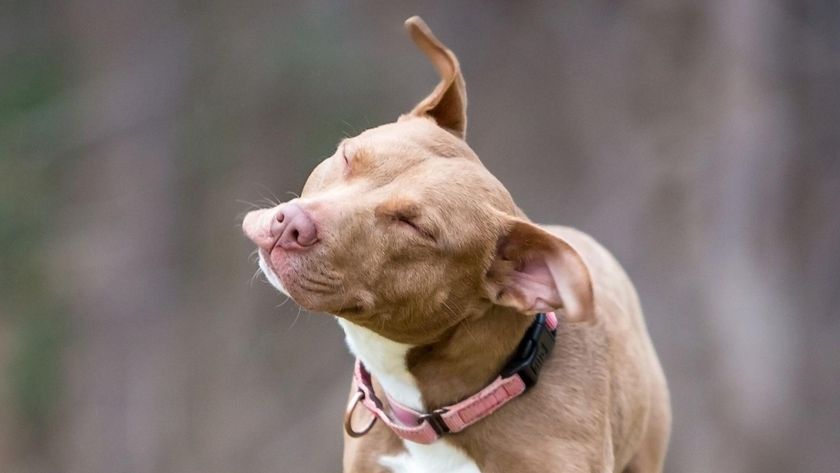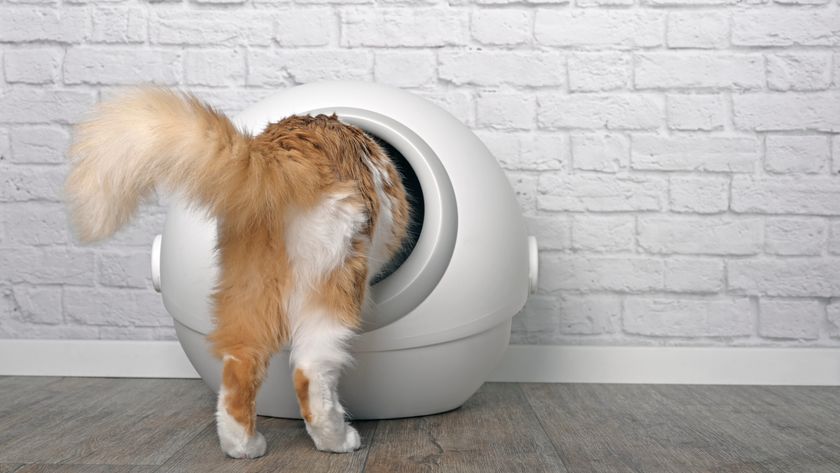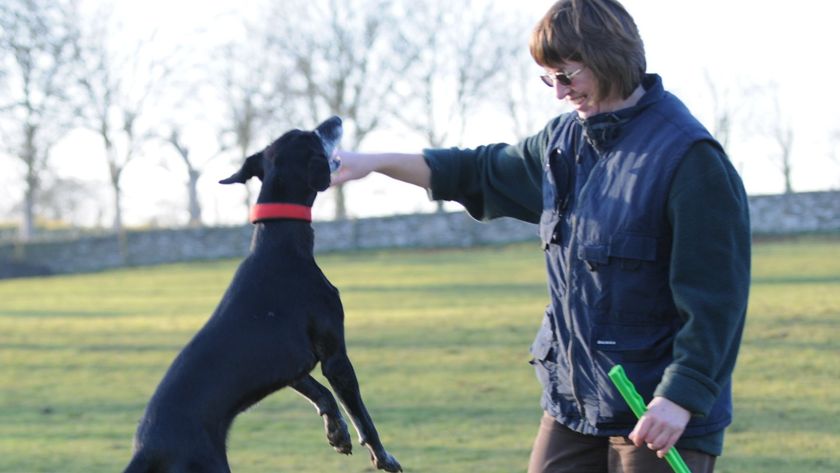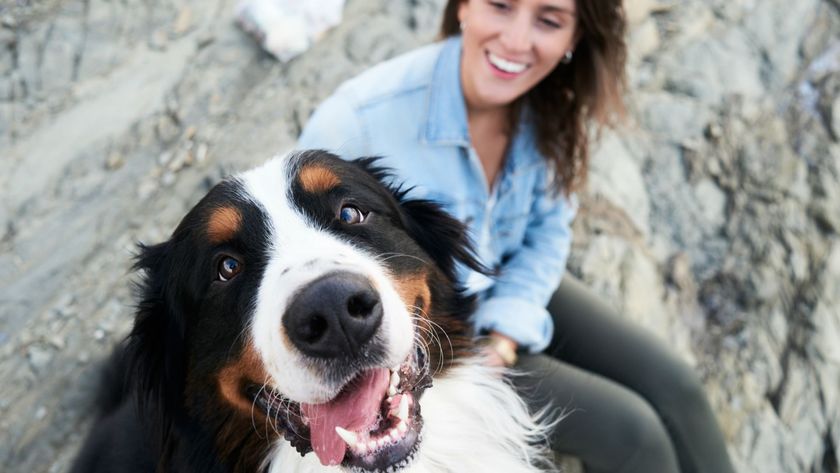Can dogs eat chicken bones? A vet answers...
Can dogs eat chicken bones? We reveal the dangers of this popular treat and share some safer alternatives
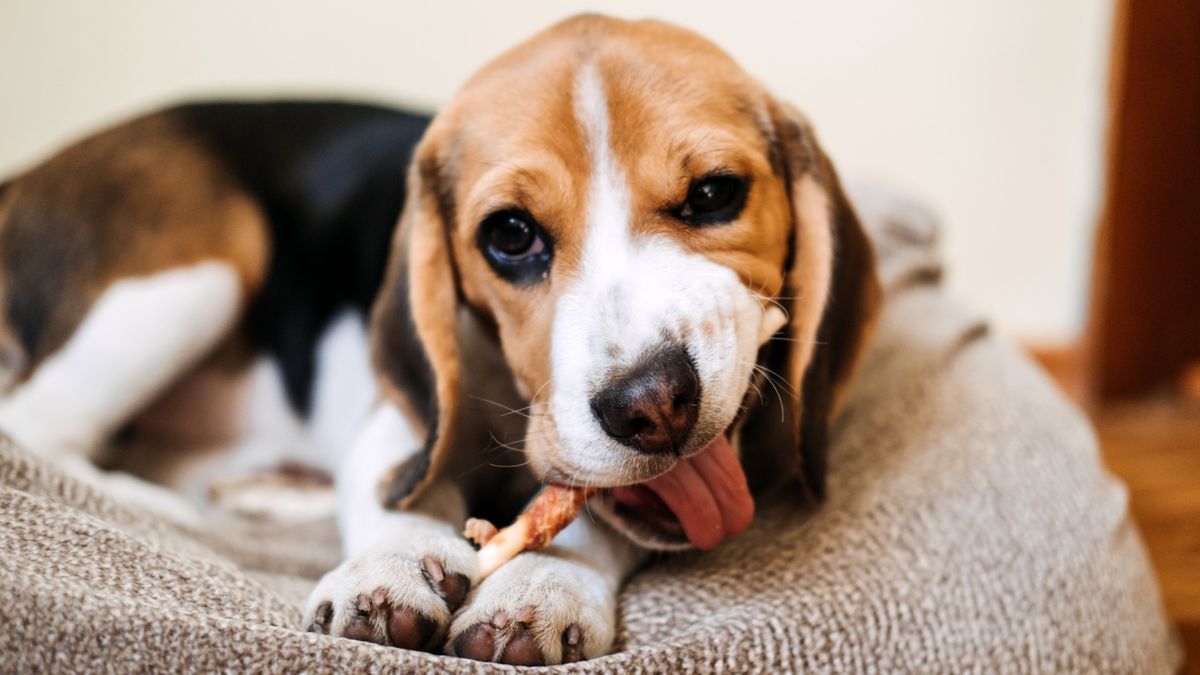
Can dogs eat chicken bones? It’s a question you may have found yourself asking if your canine companion has ever gazed longingly up at you while you tuck into a piece of delicious, roasted bird. Even if you’re known to guard your plate with your life, accidents can still happen and sometimes our pups will steal a piece of food off the counter before we have a chance to stop them.
Many human foods are dangerous for dogs to consume and this includes chicken bones, which pose significant risks to our fur friend’s health if they’re ingested. While chicken bones can be tasty to chew on and keep our pups occupied, we always recommend that you opt for the longest lasting dog chews instead as these are a much safer alternative.
Chicken bones can very easily break and splinter while your dog is chewing them and these small pieces can cause lacerations to the mouth, as well as traveling down into the intestines where they can puncture the gastrointestinal tract. Bones also present a choking hazard as they may become lodged in the throat. All of these issues have the potential to be both painful and life-threatening.
Below, Dr. Catherine Barnett goes into more details about the dangers of chicken bones, explores some satisfying and safe alternatives, and provides advice and guidance on what to do if your dog happens to eat a chicken bone when your back is turned.

Dr. Barnette graduated from the University of Florida in 2006 where she received both her B.S. in Zoology and her Doctor of Veterinary Medicine (DVM). She has 15 years of clinical experience as a small animal veterinarian, treating dogs, cats, and occasional exotic patients. When she’s not writing content as a freelance veterinary writer, Dr. Barnette lives in southwest Florida with her husband and daughter (plus two cats, a dog, and a rescued dove!) and enjoys kayaking, biking, and hiking.
Why can’t dogs have chicken bones?
Ingesting any sort of animal bone can be risky for dogs. (For more information on the risks associated with bones, see can dogs eat bones?) However, chicken bones are considered to be one of the most dangerous bones that you can feed to a dog. Chicken bones are structurally different from mammal bones, and their unique structure poses special risks to dogs.
Although the chickens we eat have little in common with songbirds that you might find in your backyard, chickens are still birds. All birds, including chickens, have hollow bones to allow for easy flight. Once cooked, hollow chicken bones (along with the bones of turkey and other birds) can easily break and splinter when chewed.
A dog that eats a cooked chicken bone can end up with bone splinters in their throat, esophagus, and even intestines. Splinters in the throat can serve as a painful source of infection, while splinters in the intestines can penetrate the intestinal wall, allowing intestinal contents to leak into the abdomen. These complications can be potentially fatal, if untreated.
Can you give dogs raw chicken drumsticks?
While cooked chicken bones are more likely to splinter, raw chicken bones carry their own risks. First of all, even raw bones can splinter when chewed. Raw bones that do not splinter or break can lead to an intestinal obstruction if swallowed. Perhaps the greatest risk associated with raw bones, however, is the risk of food poisoning.
One study published in Food Control found that over 40% of chicken drumsticks for sale in grocery stores contained salmonella. If your dog eats uncooked chicken drumsticks, they could develop salmonellosis (salmonella infection). Salmonellosis in dogs can cause a severe upset stomach, with signs including vomiting, diarrhea, decreased appetite, fever, and abdominal pain. Additionally, infected dogs can transmit salmonella to you and other people and pets in your home.
Are there safer options for dogs that love to chew?

Chewing is a natural canine behavior, so it’s important to provide your dog with consistent access to chew toys. However, it’s also important to select safe chew toys that will minimize health risks to your dog.
Many owners turn to options like antlers, rawhides, and cow hooves. While these options are certainly safer than chicken bones, they carry their own risks. These chew toys can lead to tooth fractures, intestinal obstructions, and splintering.
Instead, veterinarians often recommend Nylabones, Kongs, and other commercially-available chew toys as a safer chew option for dogs. While there is no such thing as a completely safe chew toy, Nylabones and Kongs are lower-risk options that are available in many pet stores. This is especially true if you are careful to purchase the correct size for your dog and allow your dog to only chew their toys under direct supervision. For more information, see our article addressing the question are Nylabones safe for dogs?
What if my dog ate chicken bones?
Dogs that have eaten chicken bones should be monitored closely for vomiting, diarrhea, straining to defecate, and abdominal pain. Any of these signs could indicate an emergency and warrant urgent veterinary care. You should also watch closely for coughing or gagging, which could indicate bone fragments caught in your dog’s throat.
If your dog develops any signs of illness, your veterinarian will likely recommend a physical exam and radiographs (x-rays). These images will allow your veterinarian to see whether there are bone fragments visible in your dog’s gastrointestinal tract. Your veterinarian may recommend a variety of treatments, such as a high-fiber diet to add in passing remaining bone fragments, hospitalization for intravenous (IV) fluids and supportive care, or surgery to remove pieces of bone that are trapped in the intestines. Your dog’s treatment and prognosis will depend on their clinical signs, radiographic findings, and overall condition.
How long after eating chicken bones would a dog get sick?
If your dog has already consumed chicken bones, you may be wondering when you will be able to safely consider your dog “out of the woods” after a chicken bone ingestion.
Bone splinters that lodge in the mouth or throat typically cause signs of discomfort within a few minutes. You may notice that your dog is pawing at their face uncomfortably, salivating excessively, coughing, or gagging.
When chicken bones affect the intestines, however, it can take several days for signs of illness to develop. Bone splinters that penetrate the stomach or intestines may not cause pain or other signs until an infection sets in, and an intestinal obstruction often is not apparent for several days. Therefore, if your dog has eaten chicken bones, you should monitor your dog closely for the next five to seven days, because signs may develop at any point during that period. If your dog has not shown any symptoms after a week, they probably are not going to have any significant issues.
For more advice and guidance on treats that are suitable for your pup, take a look at our vet’s guide to safe dog chews for aggressive chewers and are antlers safe for dogs?
PetsRadar Newsletter
Get the best advice, tips and top tech for your beloved Pets
Dr. Barnette is a graduate of the University of Florida, where she received both her B.S. in Zoology and her Doctor of Veterinary Medicine (DVM). She has 15 years of clinical experience as a small animal veterinarian, treating dogs, cats, and occasional exotic patients. She now works as a freelance veterinary writer, creating educational content for veterinarians, veterinary team members, and dedicated pet owners. Dr. Barnette lives in southwest Florida with her husband and daughter (plus two cats, a dog, and a rescued dove!) and enjoys kayaking, biking, and hiking. Learn more about Dr. Barnette at www.linkedin.com/in/catherinebarnette.

